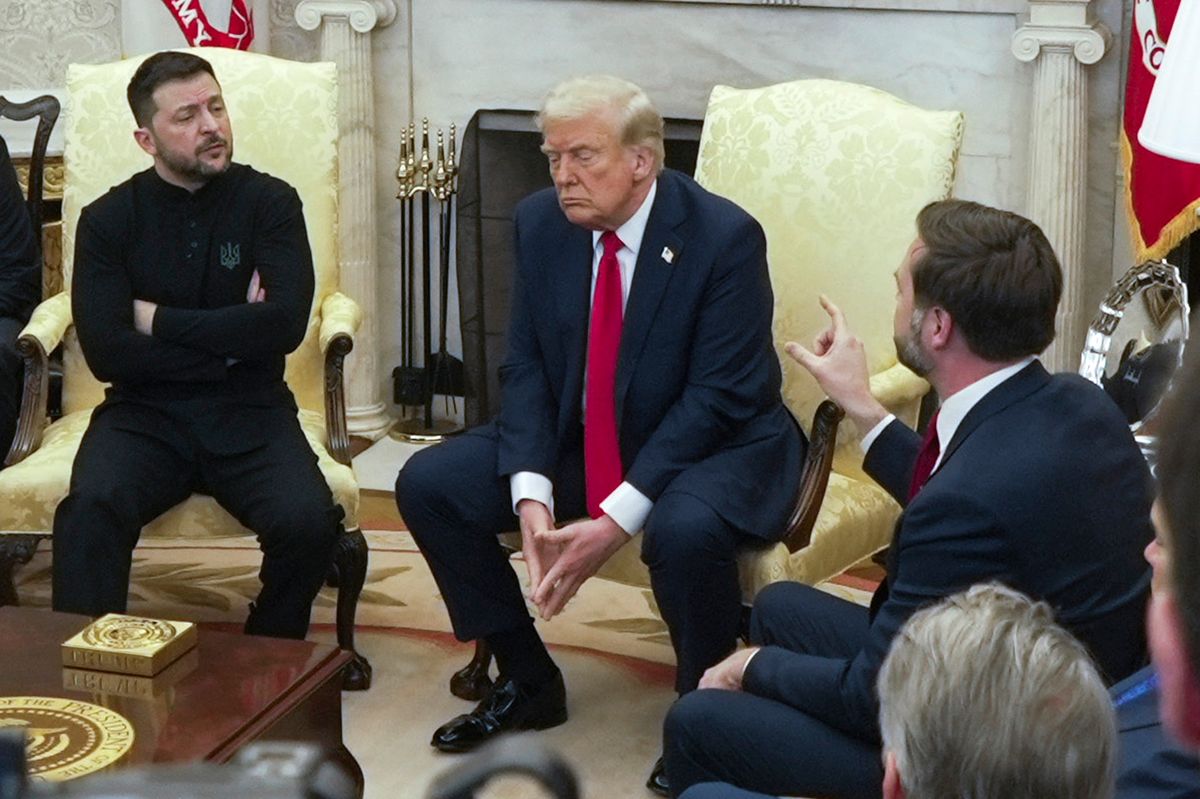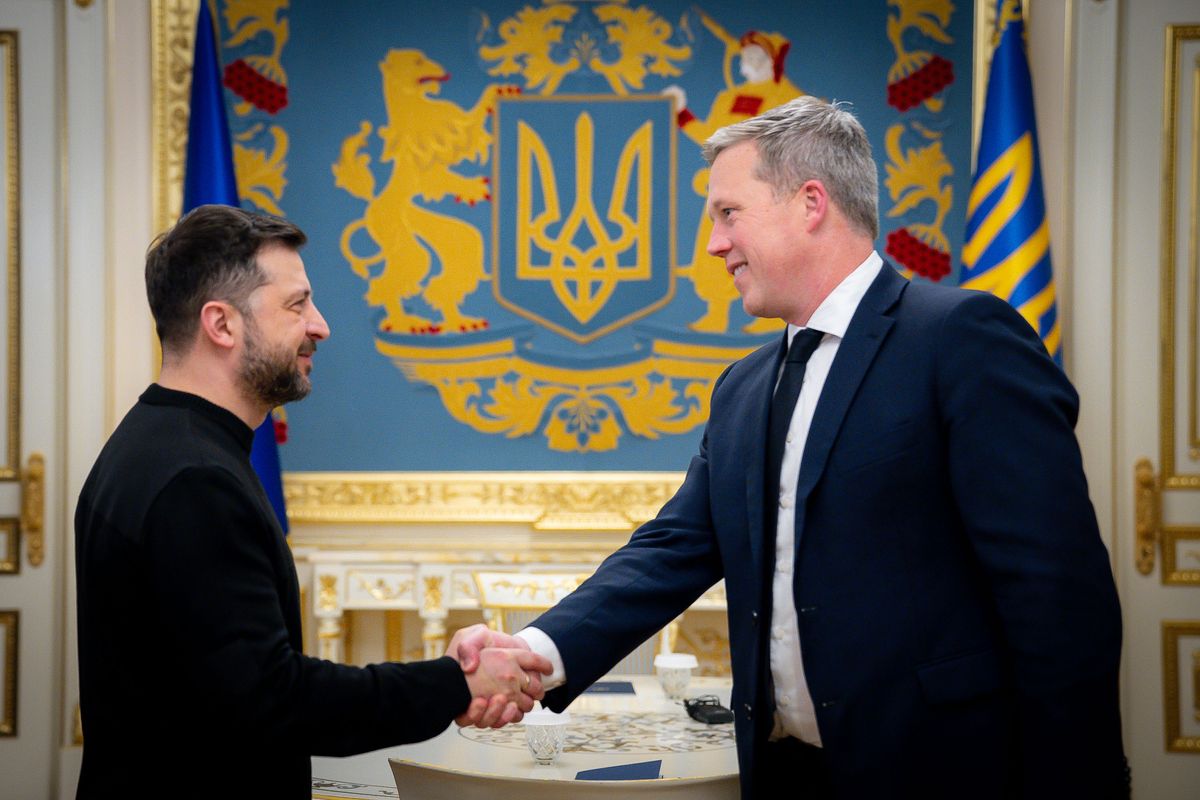WASHINGTON (AP) — With his new 28-point plan to end Russia’s war in Ukraine, President Donald Trump is resurfacing his argument that Ukrainian President Volodymyr Zelenskyy doesn’t “have the cards” to continue on the battlefield and must come to a settlement that heavily tilts in Moscow’s favor.
Trump, who has demonstrated low regard for Zelenskyy dating back to his first term, said Friday he expects the Ukrainian leader to respond to his administration’s new plan to end the war by next Thursday.
“We think we have a way of getting peace,” Trump told reporters in an Oval Office appearance. “He’s going to have to approve it.”
Buffeted by a corruption scandal in his government, battlefield setbacks and another difficult winter looming as Russia continues to bombard Ukraine’s energy grid, Zelenskyy says Ukraine is now facing perhaps the most difficult choice in its history.
Trump and Zelenskyy have had a tortured relationship
Zelenskyy has not spoken with Trump since the plan became public this week, but has said he expects to talk to the Republican president in coming days. It’s likely to be another in a series of tough conversations the two leaders have had over the years.
The first time they spoke, in 2019, Trump tried to pressure the then newly minted Ukrainian leader to dig up dirt on Joe Biden ahead of the 2020 election. That phone call sparked Trump’s first impeachment.
Trump made Biden’s support for Ukraine a central issue in his successful 2024 campaign, saying the conflict had cost U.S. taxpayers too much money and vowing he would quickly bring the war to an end.
Then early this year in a disastrous Oval Office meeting, Trump and Vice President JD Vance tore into Zelenskyy for what they said was insufficient gratitude for the more than $180 billion the U.S. had appropriated for military aid and other assistance to Kyiv since the start of the war. That episode led to a temporary suspension of U.S. assistance to Ukraine.
And now with the new proposal, Trump is pressing Zelenskyy to agree to concessions of land to Moscow, a massive reduction in the size of Ukraine’s army, and agreement from Europe to assert that Ukraine will never be admitted into the NATO military alliance.
“Now Ukraine may find itself facing a very difficult choice: either loss of dignity, or the risk of losing a key partner,” Zelenskyy said in a video address Friday.
At the center of Trump’s plan is the call on Ukraine to concede the entirety of its eastern Donbas region, even though a vast swath of that land remains in Ukrainian control. Analysts at the independent Institute for the Study of War have estimated it would take several years for the Russian military to completely seize the territory, based on its current rate of advances.
Trump, nevertheless, insists that the loss of the region — which includes cities that are vital defense, industrial and logistics hubs for Ukrainian forces — is a fait accompli.
“They will lose in a short period of time. You know so,” Trump said Friday when asked during a Fox News Radio interview about his push on Ukraine to give up the territory. “They’re losing land. They’re losing land.”
Trump’s patience remains a question
The Trump proposal was formally presented to Zelenskyy in Kyiv on Thursday by Dan Driscoll, the U.S. Army secretary. The plan itself was a surprise to Driscoll’s staffers, who were not aware as late as Wednesday that their boss would be going to Ukraine as part of a team to present the plan to the Ukrainians.
Army officials walked away from that meeting with the impression that the Ukrainians were viewing the proposal as a starting point that would evolve as negotiations progressed, according to a U.S. official, who spoke on condition of anonymity to discuss the sensitive talks.
It’s unclear how much patience Trump has for further negotiation. White House press secretary Karoline Leavitt said Thursday that Trump’s new plan reflects “the realities of the situation” and offers the “best win-win scenario, where both parties gain more than they must give.”
Asked about Zelenskyy’s initial hesitant response to the proposal, Trump recalled the February Oval Office blow-up with Zelenskyy: “You remember, right in the Oval Office, not so long ago, I said, ‘You don’t have the cards.’”
Zelenskyy is now in a vulnerable spot
The mounting pressure from Trump comes as Zelenskyy is dealing with fallout over $100 million in kickbacks for contracts with the state-owned nuclear energy company. The scandal led to resignations of top Cabinet ministers and implicated other Zelenskyy associates.
Konstantin Sonin, a political economist and Russia expert at the University of Chicago, said “what Donald Trump is certainly extremely good at is spotting weak spots of people.”
One of the 28 elements of Trump’s proposal calls for elections to be held within 100 days of enactment of the agreement.
“I think it’s a rationalistic assessment that there is more leverage over Zelenskyy than over Putin,” Sonin said. He added, “Zelenskyy’s back is against the wall” and “his government could collapse if he agrees” to the U.S. proposal.
All the while, Ukraine is increasingly showing signs of strain on the battlefield after years of war against a vastly larger and better equipped Russian military. Ukraine is desperately trying to fend off relentless Russian aerial attacks that have brought rolling blackouts across the country on the brink of winter.
Kyiv is also grappling with doubts about the way ahead. A European plan to finance next year’s budget for Ukraine through loans linked to frozen Russian funds is now in question.
The Trump proposal in its current form also includes several elements that would cut deeply into Ukrainian pride, said David Silbey, a military historian at Cornell University.
One provision calls on Russia and Ukraine to abolish “all discriminatory measures and guarantee the rights of Ukrainian and Russian media and education,” and “all Nazi ideology and activities must be rejected and prohibited.” That element could be seen by the Ukrainian side as giving credence to Putin’s airing of distorted historical narratives to legitimize the 2022 invasion.
Putin has said the war is in part an effort to “denazify” Ukraine and complained of the country’s “neo-Nazi regime” as a justification for Russia’s invasion. In fact, in Ukraine’s last parliamentary election in 2019, support for far-right candidates was 2%, significantly lower than in many other European countries.
The plan’s provision is “very clearly an attempt to build up Putin’s claim to Russian cultural identity within Ukraine,” Silbey said. He added, “From territory loss to the substantial reduction of the Ukrainian military to cultural concessions that have been demanded, I just don’t think Zelenskyy could do this deal and look his public in the eye again.”
————
AP writers Michelle L. Price and Konstantin Toropin contributed reporting.
By AAMER MADHANI and WILL WEISSERT
Associated Press



